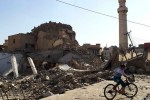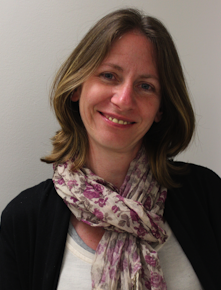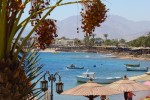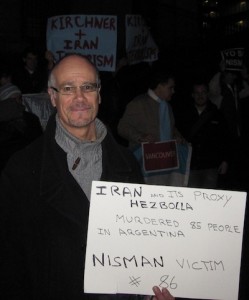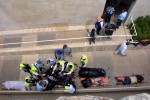Montreal Mayor Denis Coderre at the Jan. 11, 2015, rally in Montreal in support of the victims of the Charlie Hebdo shooting. (photo by Gerry Lauzon via commons.wikimedia.org)
A hate crimes department within the city’s police force might be a good idea, Montreal Mayor Denis Coderre said following a meeting with Jewish community leaders from Quebec and France at Montreal’s city hall on June 25.
Coderre and members of his executive committee held a two-hour closed-door session to discuss what role cities can play in combating antisemitism in Montreal and globally. He underlined the frequent link between antisemitism and radicalization and its violent expression.
Unlike forces in many North American cities, the Service de Police de Montréal (SPVM) does not have a unit dedicated to investigating crimes suspected to be motivated by hatred of identifiable groups. Coderre said he will meet the SPVM to pursue the possibility.
“We have good people [in the police] who are doing a good job now, but we have to look into whether we can do things a better way and learn from best practices [elsewhere],” he said.
That was the most concrete suggestion coming out of the meeting.
The mayor’s main message after the meeting was that “we have to call a spade a spade.… Antisemitism exists, here and around the world. We have to denounce it, we have to talk about it, we have to understand that clearly something is going on and we must be there to fight it.”
The meeting was the fulfilment of a promise that Coderre had made to leaders of the French Jewish community when he visited Paris in February, shortly after the murderous terrorist attacks at the Charlie Hebdo magazine office and Hyper-Cacher kosher grocery store.
Present at the meeting, from France, were Serge Dahan, president of B’nai B’rith France, and Yonathan Arfi, vice-president of the Conseil Représentatif des Institutions Juives de France, as well as leaders of Federation CJA, the Centre for Israel and Jewish Affairs (CIJA), the Communauté Sépharade Unifiée du Québec and B’nai Brith Canada.
Julien Bauer, a Université du Québec à Montréal political science professor, and Mount Royal MP and human rights activist Irwin Cotler participated as experts on antisemitism.
Coderre hopes that Montreal and Paris can cooperate especially closely on strategies to combat antisemitism and make their cities safer.
Coderre called antisemitism “the oldest and most persistent” form of racism and warned against a tendency to “trivialize” it. He also recognized that anti-Zionism often cloaks contemporary antisemitism.
The meeting was also a followup to the June 10-11 Montreal Summit on Living Together, a gathering of 23 mayors from around the world convened by Coderre to examine how municipalities can prevent radicalism and ensure security, starting by promoting respect for diversity and harmony among the different cultural groups in their citizenry.
The City of Montreal, also in the wake of the Paris attacks, announced plans for a new centre aimed at preventing violent radicalism. So far, it consists of a telephone hotline to report information on suspected radical activity. Coderre said that the centre can play a role in preventing antisemitism. He wants to form partnerships with the schools, civil society and others in this endeavor.
Coderre said he plans to make the discussion on antisemitism an annual event, and believes that Montreal can serve as a model of how to combat racism and radicalism, while achieving “a balance between openness and vigilance.”
“The more we talk about it, the more it will have a positive effect,” he said.
CIJA Quebec vice-president Luciano Del Negro applauded Coderre’s commitment in taking on the “challenge” of combating antisemitism.
He especially appreciated that the mayor recognizes the distinctiveness of antisemitism among forms of racism, and that antisemitism is not only a phenomenon of the extreme right, but also the far left.
Similarly, Cotler applauded Coderre’s “exemplary leadership” and recognition that “municipalities not only have a role, but a responsibility, to combat antisemitism.”
– For more national Jewish news, visit cjnews.com.



